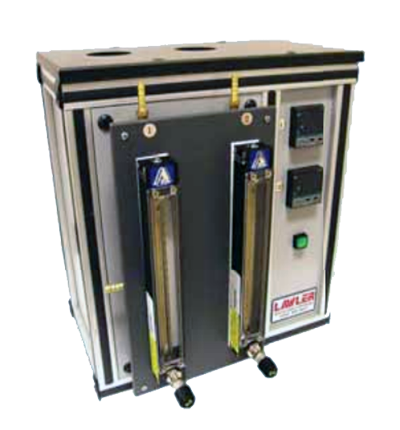ASTM D6468-19
Standard Test Method for High Temperature Stability of Middle Distillate Fuels
Standard test method ASTM D6468 covers relative stability of middle distillate fuels under high temperature aging conditions with limited air exposure. This test method is suitable for all No. 1 and No. 2 grades in Specifications D396, D975, D2880, and D3699. It is also suitable for similar fuels meeting other specifications.
The ASTM D6468 thermal stability test method is not suitable for fuels whose flash point, as determined by Test Methods D56, D93, or D3828, is less than 38°C. This test method is not suitable for fuels containing residual oi.
Middle Distillate Fuels work in conditions that are appropriate for degradation with the corresponding formation of insoluble sludge and varnish deposits, together with the undesirable thickening that affect performance as the environments they operate are at high temperatures. Stability of distillate fuels primarily highly depend on the crude oil source and severity of processing that lead to the formation of olefins, diolefins in addition to the presence of oxygen, nitrogen and sulfur compounds.
Stability is commonly determined on the basis of oxidative or thermal changes a fuel might undergo and that might affect its performance during its use or during the time it is stored. A precise and reliable determination of the thermal stability property is provided in particular by ASTM D6468 and D2274 the accelerated method. They constitute a valuable tool to assess service life or long term storage stability.
Referenced Documents
ASTM Standards:
D56 Test Method for Flash Point by Tag Closed Cup Tester
D93 Test Methods for Flash Point by Pensky-Martens Closed Cup Tester
D396 Specification for Fuel Oils
D975 Specification for Diesel Fuel Oils
D1500 Test Method for ASTM Color of Petroleum Products (ASTM Color Scale)
D2274 Test Method for Oxidation Stability of Distillate Fuel Oil (Accelerated Method)
D2880 Specification for Diesel Gas Turbine Fuel Oils
D3699 Specification for Kerosine
D3828 Test Methods for Flash Point by Small Scale Closed Cup Tester
D4057 Practice for Manual Sampling of Petroleum and Petroleum Products
D4625 Test Method for Middle Distillate Fuel Storage Stability at 43 °C (110 °F)
D5452 Test Method for Particulate Contamination in Aviation Fuels by Laboratory Filtration
D6468 Test Method for High Temperature Stability of Middle Distillate Fuels
Terminology
Definitions of Terms Specific to This Standard:
adherent insolubles—material that is produced in the course of stressing distillate fuel and that adheres to the glassware after fuel has been flushed from the system.
filterable insolubles—material that is produced in the course of stressing distillate fuel and that is capable of being removed from the fuel by filtration.
inherent stability—the resistance to change when exposed to air, but in the absence of other environmental factors such as water, reactive metal surfaces, and dirt.
storage stability—the resistance of fuel to formation of degradation products when stored at ambient temperatures.
thermal stability—the resistance of fuel to formation of degradation products when thermally stressed.
Summary of Test Method
Two 50-mL volumes of filtered middle distillate fuel are separately aged for 90 or 180 min at 150°C in open tubes with air exposure. After aging and cooling, the fuel samples are filtered and the average amount of filterable insolubles is estimated by measuring the light reflectance of the filter pads. The 100 and 0 % extremes of the reflectance rating range are defined by an unused filter pad and a commercial black standard, respectively.
Significance and Use
This thermal stability test method is widely used to provide an indication of thermal oxidative stability of distillate fuels when heated to high temperatures that simulate those that may occur in some types of recirculating engine or burner fuel delivery systems. Results have not been substantially correlated to engine or burner operation. The test method can be useful for investigation of operational problems related to fuel thermal stability.
No quantitative relationship between the pad rating and the gravimetric mass of filterable insolubles can be given. The reason being is that this method uses a filter paper with a nominal porosity of 11 µm, which will not capture all of the sediment formed during aging but allows however differentiation over a broad range. In addition, Reflectance ratings are also affected by the color of filterable insolubles, which may not correlate to the mass of the material filtered from the aged fuel sample.
Apparatus
Aging Tubes, 25× 200 mm, heavy wall test tubes made of borosilicate glass. As illustrated in Fig.1.
Heating Bath, with liquid heating medium, thermostatically controlled to maintain the sample in the aging tube within 1.5°C of 150°C. It must be large enough to hold aging tubes immersed in the heating liquid to a depth above the level of samples in the tubes. The bath and its location shall be such to enable shielding of the samples from direct light during aging. The volume of bath and its heat recovery rate shall be such that the temperature of the medium does not drop more than 5°C when the maximum number of aging tubes are inserted, and recovery to 150°C shall not require more than 15 min.
(Warning—The flash point of the liquid heating medium must be at least 180°C. Bath vapors and oil sample vapors shall be properly vented. Exposed hot surfaces on the apparatus and hot heating medium can cause severe burns.)
Bath Thermometer- either glass or digital measuring temperature measuring device, whose accuracy in the 140 to 160°C range is certified or traceable to a certified thermometer.
Membrane Filter Holder – to fit 47-mm membrane filters, fitted to a heavy-walled 500-mL or 1-L vacuum flask. See Fig.1 for illustration.
NOTE 1—Several types of membrane filter holders are available. To reduce electrostatic hazards, an all metal filter holder equipped with grounding cables is recommended.4 Such an apparatus and correct grounding practices are described in Test Method D5452. A fritted glass filter holder is less preferred because of a tendency to become partially clogged during use so that filter pads that do not have uniform deposits are obtained. Glass filter holders that use a 75-µm (200-mesh) screen to support the filter are available; however, since the screen can be an unbonded electrostatic charge collector, these are not recommended for use with flammable liquids.
Vacuum Source – that limits the maximum vacuum to 27 kPa (200 mm Hg) below atmospheric pressure. The vacuum should rise to 27 kPa within 10 to 15 s after the sample is added to the filtration funnel.
NOTE 2—Use of reduced vacuum improves retention of particulate on the relatively porous filter media.
Reflection meter – Photovolt Model 577 Digital Reflection Meter, complete with search unit Y with a green filter and polished black glass standard.
NOTE 3—Other reflection meters or search units, or both, can be used, but they are likely to provide only similar (not identical) results. For example, Photovolt Model 577 digital reflection meter equipped with search unit W usually gives somewhat lower percent reflectance values. Correlation of these values is discussed in Appendix X1 of D6468.
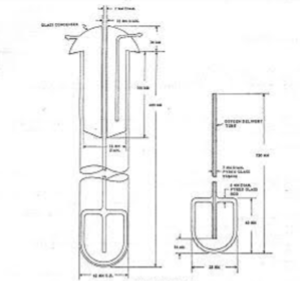
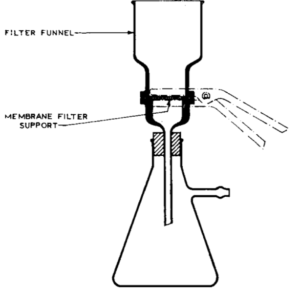
Figure 1. Diagram of an Oxidation Stability Apparatus
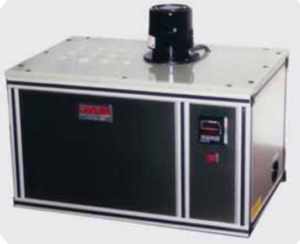
Figure 2. Oxidation Stability Liquid Bath for D6468 Test Method
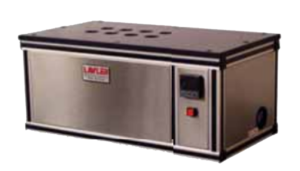
Figure 3. Heated Aluminum Block Bath for Stability D6468 Test
Reagents and Materials
Purity of Reagents—Reagent grade chemicals shall be used in all tests. Unless otherwise indicated, it is intended that all reagents conform to the specifications of the Committee on Analytical Reagents of the American Chemical Society where such specifications are available. Other grades may be used, provided it is first ascertained that the reagent is of sufficiently high purity to permit its use without lessening the accuracy of the determination.
n-Heptane, reagent grade.
(Warning—Flammable. Harmful if inhaled.)
Adherent Insolubles Solvent (Trisolvent or TAM). A mixture of equal parts per volume of:
Toluene
(Warning— Flammable. Vapor harmful)
Acetone, clean commercial or reagent grade.
(Warning—Extremely flammable.)
Methanol
(Warning— Flammable. Vapor harmful. Maay be fatal or cause blindness if swallowed or inhaled)
Hydrocarbon Solvent, 2,2,4-trimethylpentane (isooctane), 99.75 % purity minimum
(Warning—Extremely flammable).
Filter Paper (Filter Pad), Whatman No. 1, 47-mm diameter, or equivalent.
Sampling
Obtain samples in accordance with Practice D4057. Use only epoxy-lined cans or borosilicate glass bottles. Shield clear glass bottles from sunlight to prevent photochemical reactions.
Stability of some fuels changes over time, so it is important to record the sampling date; record time and date if sample is from a fuel or component rundown line. Samples should be stored at temperatures below 5°C. Follow strictly section 8 of D6468 for important considerations.
Preparation of Apparatus
Clean new aging tubes, membrane filters holders according to the instructions described in section 9 of D6468 STM.
Calibration and Standardization
Turn on the reflection meter and allow to stabilize for 30 min. Set the Gain to LO and follow the manufacturer’s instructions to make a two point calibration using the black standard and the standard plaque supplied with the search unit.
Follow in detail section 10 of D6468 standard test method to adjust the meter readings for 0 and 100%.
Procedure
Set and adjust the temperature bath to 150 ± 1.5 °C and assemble the filter apparatus with a new specified filter paper and filter at least 100 mL of the sample to be analyzed.
Measure 50 ± 2 mL and decant it into the aging tubes. Insert the uncapped tubes into the heating bath set at 150 °C for either 90 ± 3 min or 180 ± 5 min.
After completion of the test time allow the sample to be cooled in air at ambient temperature in the dark to prevent as much as possible photochemical decomposition reactions. The cooling time varies according to section 10 of D6468 for 90 min to 4 hours.
Thoroughly follow section 10 and Appendix X3 of D6468.
Report
Report the following information:
– Sampling date and date of test (see in Sampling section 8.3 in D6468).
– Aging time at 150°C.
– Percent reflectance filter pad rating as the average of duplicate determinations, to the nearest whole percent.
Precision and Bias
The precision of this procedure as determined by the statistical examination of 5 D975 S500 fuel samples analysis the interlaboratory study between 15 participating laboratories (see research report RR: D02-1463). Precision was obtained as follows:
Repeatability—The difference between results obtained on the same day by the same operator with the same apparatus under constant operating conditions on identical test material, would in the long run, with normal and correct operation of the test method, exceed the following values only in one case in twenty.
Aging Time Repeatability
90 min 22.42 – 0.2130x
180 min 22.55 – 0.2145x
Where:
X = denotes average value of two results in percent reflectance
Reproducibility—The difference between two single and independent results obtained by different operators working in different laboratories on identical test material, would in the long run, in the normal and correct operation of the test method, exceed the values indicated by the formula only in one case in 20:
Aging Time Reproducibility
90 min 44.04 – 0.4281x
180 min 34.11 – 0.30324x
where:
X = is the average value of two results in percent reflectance
Bias— Not determined due to the lack of an accepted reference material for this test method.
We offer the following items that cover this method:
The oxidation stability tube heating baths concept illustrated below, is similar to a heated aluminum block represented in fig.3 except for the fact that it uses individual aluminum sleeves. Each sleeve is of a correct dimension to snugly fit a test tube of the specified requirements. A great advantage of the heated tube bath vs. aluminum block baths is the ability to individually offset the tube temperature vs. actual sample temperature. This very effectively eliminates the sample temperature non-uniformity as might be presented with heated aluminum block baths.



